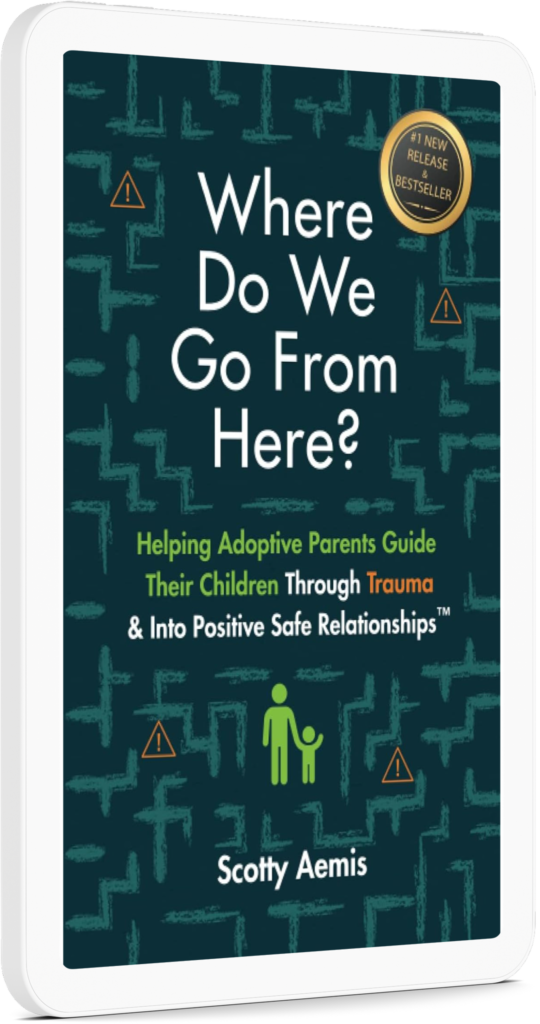The Science Behind What Really Works
Traditional parenting isn’t a one-size-fits-all. In fact, it fails children who have experienced trauma. In this article, we’ll take a deeper look at why traditional parenting fails children with trauma and the science behind parenting styles that really works.
Why Traditional Parenting Doesn’t Work
Traditional parenting methods are quite literally harmful to children who have suffered trauma. This is because it doesn’t address the underlying emotional and neurological needs shaped by traumatic experiences.
Trauma breaks trust. Because of this, children with trauma need to know three crucial things from their caregiver or parent:
- Do you love me?
- Can I trust you?
- Can you help me?
Traditional parenting doesn’t often fulfill these needs. With traditional parenting, rules are set and children are expected to follow them. When they deviate from behaviors that are considered acceptable, they are punished for those unwanted behaviors. This only further serves to make your child feel unloved and that they cannot trust you.
Remember, trust and respect are earned. Just because you are the parent or caregiver, does not mean your child must automatically afford you trust and respect.
The Science Behind Unwanted Behaviors
Trauma physically injures or alters the brain and how it processes information. Place yourself in your child’s shoes. They repeatedly suffered at the hands of another adult or peer and that can leave them on edge. They are constantly waiting for the proverbial shoe to drop. This means they are in a constant state of fight or flight. This heightened state of awareness can leave anyone ready to act out of self-preservation at a moment’s notice. It is also emotionally and physically exhausting.
So when your child experiences something that triggers their fight or flight response into action, it causes dysregulation of the brain. This means your child is unable to control their emotions, impulses, and behaviors. All the traditional parenting in the world cannot reach your child when they are in a dysregulated state, and can further traumatize your child.
The Parenting Style that Scientifically Works!
When we learn the science of how the brain works in traumatized children, we are able to better understand how “bad behaviors” happen, and why traditional parenting does not work. There is a better way of parenting that follows the science of trauma!
Because childhood trauma is the result of broken trust between a child and an authority figure, it stands to reason that building trust back up is the key to healing for your child with trauma. Your focus should be on cultivating a positive, safe relationship with your child. You have to show your child that they can feel safe and loved by you. It’s about creating a safe space for your child to work through their trauma.
By focusing on showing your child that you love them, that they can trust you, and that you can help them, you are fulfilling the three basic needs your child has. It is only when these basic needs are met that your child is able to begin their healing journey. In order to fulfill those needs, it’s key that you are able to relate to your child with trauma by offering them both empathy and hope.
Empathy is about being able to convey to your child that you understand what they are feeling and validating their feelings. Do not ever dismiss your child’s feelings, as this can lead to further mistrust. Instead, verbalize to them that you understand how they are feeling.
Once your child feels validated, they are more likely to listen to what you have to say. During this time, work on helping your child self-regulate. This can be as simple as doing some deep breathing together. It should be a calming experience that can help you and your child move to the next step in problem-solving when challenges occur.
But more importantly, it’s crucial that you provide your child with hope for a better future. Once you have established empathy and your child is regulated, you can then find out the real reason your child is displaying unwanted behavior. Helping your child identify what triggers them into dysregulation can help them limit or avoid those triggers in the future. Then help your child to come up with a solution to the problem. Problem-solving should always involve your child; they should feel like they have a sense of control over what they do next. Never force your child to do something they aren’t ready or willing to do.
Final Thoughts
Positive Safe Relationship parenting requires unconditional love and a hefty dose of patience. Your child will not trust you from just one positive interaction. It’s about building that relationship over time and showing your child that you love and support them no matter what.
Healing from childhood trauma is a lifelong journey, but it needs to be done at your child’s own pace. Every child with trauma has a different story, and their path to healing will be uniquely their own. Remember that you are there to guide them and show them empathy, love, and hope. You are their best advocate and cheerleader, and Positive Safe Relationship parenting will give your child the confidence and security to heal and succeed!


